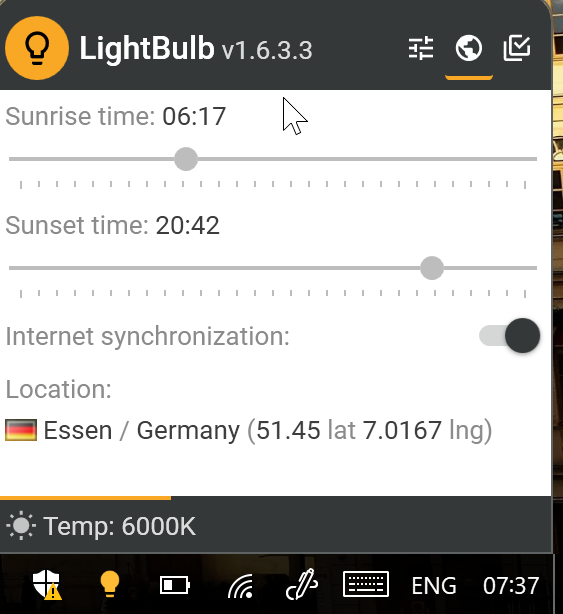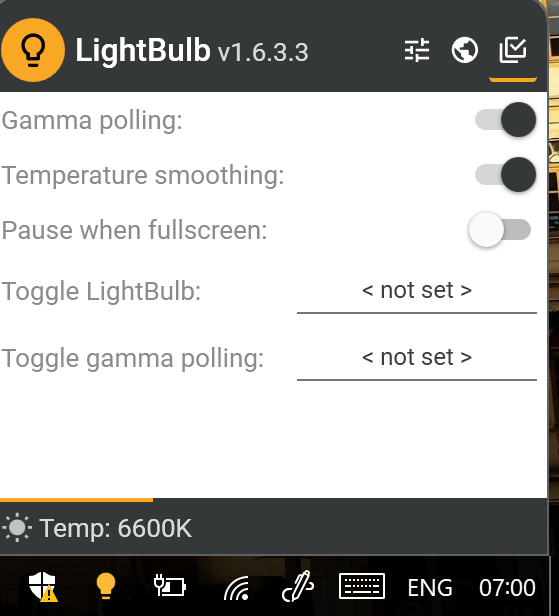Lightbulb: open source F.Lux alternative for Windows
Lightbulb is an open source program for Windows that provides you with options to reduce blue light automatically as the day passes by.
Programs that reduce blue light are nothing new. There is the grand daddy of them all, F.Lux for Windows which was released in a new version recently. Companies like Apple and Microsoft started to add the functionality to the latest versions of their operating systems as well.
Microsoft calls the feature Night Light Mode for instance, and it allows users of the Windows 10 Creators Update or newer to adjust screen gamma automatically using it.
As is the case usually, third-party programs offer more advanced features over built-in ones of the Windows operating system.
Lightbulb review

Lightbulb is an open source program that you can download from the GitHub's project page. It is compatible with all versions of Microsoft Windows starting with Windows 7 and going up all to the way to Windows 10.
The program requires the Microsoft .Net Framework 4.0, but can be downloaded as a portable version that does not need to be installed, or a regular setup version. Both offer an identical feature set.
When you start the program, either directly after download or after installation, you will notice that it places an icon in the system tray, but may not do anything at all afterwards.
This depends on the time of day. The program is configured to change the screen gamma at night, and if you happen to launch it late in the day, you may notice that it adjusts the gamma right away.
It is recommended to open the configuration of Lightbulb on start to adjust the program's functionality according to your needs.
You may set the day time and night time color temperature in Kelvin on the first screen, the transition period, and may run a preview of the settings right away.
The temperature is adjusted on 100K steps, and changes to the currently active setting is reflected directly on the screen.
The transition period describes the periods in which Lightbulb switches from Day to Night, and from Night to Day mode.
The preview feature highlights how the screen gamma would change in a 24 hour period so that you know what to expect; ideal for a quick check of the configuration changes that you have made.

The geolocation tab of Lightbulb's preferences enables you to set the sunrise and sunset time manually, and sync the program with the Internet (disabled by default), to adjust it according to the time of the year.

The final configuration screen lists advanced options. You may enable hotkeys to toggle Lightbulb or Gamma Polling, disable gamma polling or temperature smoothing by default, or disable the program's functionality when a fullscreen program runs.
Comparison to F.Lux
How does Lightbulb compare to F.Lux? F.Lux is without doubt the product that is more mature. It offers features that Lightbulb does not offer, such as presets, options to whitelist programs, or support for a wider range of color temperatures.
Lightbulb uses 20 or so Megabytes of RAM while it is running in the background, about the same that F.Lux uses. Lightbulb is open source on the other hand, while F.Lux is not.
Closing Words
Lightbulb is a well designed blue light mode application for Windows devices. It offers better functionality than the Blue Light mode of the Creators Update of Windows 10, but less than the established F.Lux application. Still, it may offer all you need from a program that manipulates screen gamma.
Now You: Do you use blue light programs on your devices?
This article was first seen on ComTek's "TekBits" Technology News

- Log in to post comments